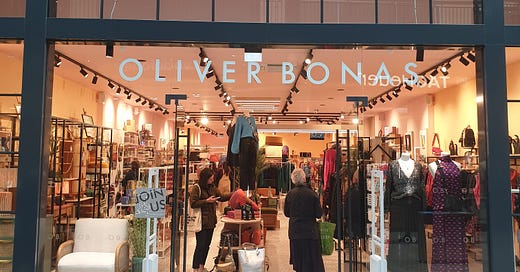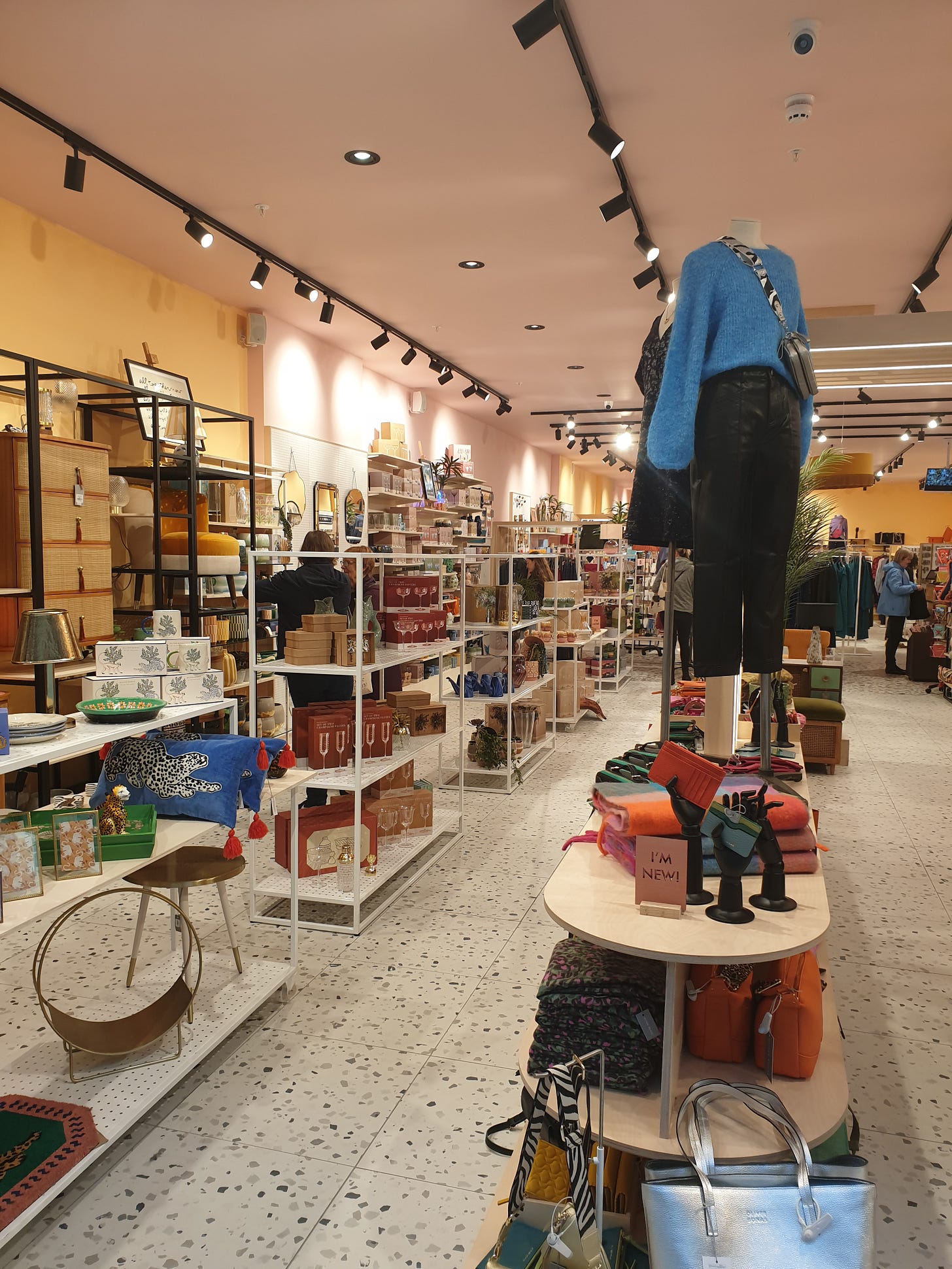Retail observers love to debate the death of the department store. How, in this era where consumers have access to millions of specialist retail outlets through their phones, can it possibly make sense to operate a store that sells just an edited selection of a wide variety of different types of goods?
Surely, the argument goes, you are bound to be out-competed. You’ll be uncompetitive on price compared to the giant warehouse retailers, and uncompetitive on range compared to all of those specialists. Neither fish nor fowl, you’ll be doomed to fade away. And the undeniable reality that regional and local department stores all across the country have disappeared in recent years in huge numbers seems to give that argument weight.
By that logic, Oliver Bonas makes no sense at all. A few nice frocks, a couple of bits of furniture, some books, some wine glasses and some knick-knacks in a 2000 sq ft store is surely the apogee of everything that is flawed in the department store model - the perfect distillation of why big stores like John Lewis are doomed to fail, all packed neatly into a little High Street museum of how retail used to be?
And yet. Not only are they everywhere, they are profitable, growing and generally appear to be in rude financial health.
So what are we missing?
As so often with cursory retail analysis, we are missing the customer. But the Oliver Bonas team are certainly not.
Spend a bit of time in the stores and you realise that whilst their product offering may be narrow, it is perfectly tuned to a particular target customer. And that target is a subtle one. Whilst she is very obviously female, the Oliver Bonas target customer would be harder to pin down by age - a bit of people-watching in store reveals everyone from 20-somethings to pensioners.
Instead, what the business seems to capture really well is a life-style and self-image based segmentation. It took me a while to understand what was going on, but once you switch your question from “why would anyone shop here?” to “what are you saying about yourself when you shop here?” then it all snaps into place. This is an unashamedly middle-class, liberated and materialistic shop. You don’t need anything they sell, but if you belong to the right segment of customers, you want everything they sell.
That kind of connection with a customer grouping is incredibly hard to pull off. If you try it, then the right set of products for your store are not defined by product category, and nor are they easily defined by the age or other socio-demographic attributes of a customer base. The ranging and merchandising strategy won’t emerge from a spreadsheet, and indeed it is pretty hard to get it to emerge from focus group research either. Instead it emerges from knowing (and often having colleagues who belong to) the target customer segment yourself.
Looking across our High Street it is hard to see too many retail brands as brilliantly connected to their customers as this. Lush is probably a good example, and is another retailer whose financial results seem far stronger than logic dictates. Try going to an investor with a business plan to open a huge chain of shops selling bath bombs and you’ll be laughed out of the room, but marry that with a laser-like focus on a core target market and you can make it work.
This, then, is my offering to the ‘how to save John Lewis’ debate. When the JLP department store are at their best, it is because they have achieved the same alchemy that Oliver Bonas have - the creation of retail spaces and product ranges that appeal directly to the hearts of a particularly middle-England customer segment. The fortunes (and financial results) of the business have risen and fallen by how well they have delivered on that customer proposition.
Right now, visiting the JL stores as they get dressed up for Christmas provides a vivid illustration of that. The Christmas displays are fantastic, and in the store I visited the proximity of that seasonal product with ranges of table-ware, candles and homeware ranges worked really well. Popping upstairs to other departments, however, saw the magic fade with womenswear and electricals areas that looked like any other department store.
This, then, is the opportunity. The ideal customer segment for John Lewis is not the same one as for Oliver Bonas, of course, so this is not a prescription for copycat merchandising. But the more clearly the JLP stores can reflect their own ideal customer group in the way they staff, stock and merchandise their stores the closer they will get to shutting down the nihilism of “everything will go online” by proving that stores can deliver magic all year round, and not just at Christmas.
Might that be true for your business too? Do you and your team know your customers well enough to deliver a store experience which has a single-minded view of them in its sights? Or are you, like many retailers, compromising that core customer view for fear of alienating other customer segments and narrowing your sales base? That tension between focus and broad appeal, or between specialist and general retailer is present in all of our businesses. Getting the answer right, as so many department stores have shown us, is an existential challenge for any retail leadership team.






Love that comment "You don’t need anything they sell, but if you belong to the right segment of customers, you want everything they sell." Lark is another retailer in the same sector who are doing something similar. They have also realised that expensive shopfitouts are unlikely to generate a return. Despite this, the shops look good. Functional but stylish
I had two thoughts on reading this.
* One was to try and think of other retail businesses that had a model designed around a customer, rather than a category - and I struggled. I'd reckon that 'Next' went from clothing to a lifestyle brand for the young urban professional (does anyone say yuppie any more?) but I'm not sure if you'd say that today. There are others that are 'clothing plus a few other things'.
* The other is that you have just solved my Christmas shopping problems ...